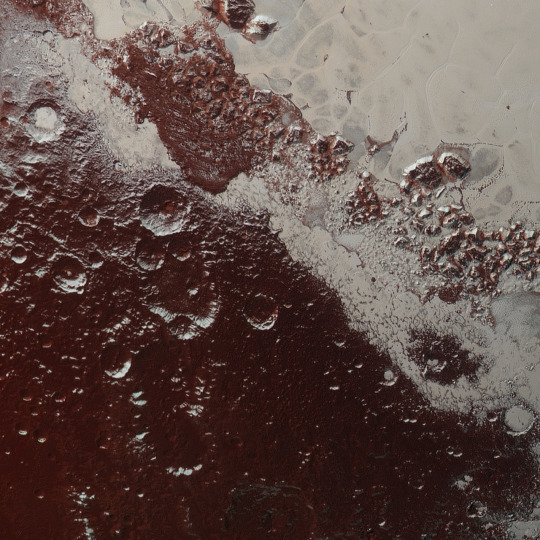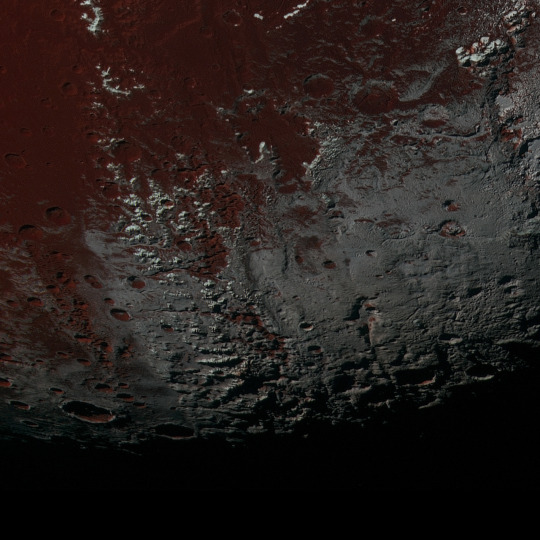Text
WHALE WATCH – OR NOT: HELPING INDUSTRY ADAPT TO A CHANGING CLIMATE

Whale watching is a major global tourism industry with an annual revenue of over two billion (US dollars) and more than 13 000 employees. Furthermore, it is estimated that close to 15 million people every year participate in whale watching. On the Gold Coast in south-east Queensland there are 5 whale watch operators with a daily passenger carrying capacity of close to 1000 people. This success however is not assured as shifts in migration patterns, changing resting and calving locations and changes in weather have already been documented and attributed to climate change. A long-term study conducted between 1984 and 2010 that was published in the journal PLoS ONE, has documented how humpback whales arrived at feeding grounds on average one day earlier each year, suggesting a remarkable ability to react to small fluctuations in sea temperature. Until recently there has been no investigation of the impacts of climate change on the whale watch industry and how the industry can adapt and continue to prosper.
Read more
0 notes
Text
TURNING SALT WATER INTO ENERGY

Can the saline water from the desalination process be used to generate power? According to new research harnessing the energy created from salinity gradients — for example, when freshwater meets the sea — could provide a renewable source of power able to mitigate climate change impacts, reduce reliance on fossil fuels and improve processes within the desalination industry, according to new research from the School of Engineering.
Read more
1 note
·
View note
Text
EATS, SHOOTS AND LEAVES: WHAT THE MOVIE INDUSTRY DOES TO ‘LOCATION’

The motion picture industry has come a long way since the silent movies of yesteryear. The use of CGI and special effects capture our imaginations, but have these reduced the environmental impacts associated with filming?
The recent release of Mad Max: Fury Road has rekindled discussion about damage to sensitive sand dune environments, reportedly caused during the film’s production on the Namibian coastline.
The environmental credentials of the motion picture industry have been questioned before. Films set in natural environments, such as The Beach (2000), the Lord of the Rings trilogy (2001-2003) and The Hobbit trilogy (2012-2015), have all received scrutiny.
Read more
3 notes
·
View notes
Photo





This is one slice of an incredible high resolution, enhanced color image of Pluto, recently released by NASA. You can see the full, larger version here.
Credit: NASA/JHUAPL/SwRI
266K notes
·
View notes
Text
SHARK CULLS COULD AFFECT CLIMATE CHANGE

Continued unsustainable harvesting of large predatory fish, including the culling of sharks, can have far-reaching consequences for the way we tackle climate change.
Professor Rod Connolly, a marine scientist from Griffith University's Australian Rivers Institute, is the co-author of new research that says keeping populations of larger fish intact is critical to carbon accumulation and long-term storage in vegetated coastal habitats such as saltmarsh, mangroves and seagrass.
Watch a video of Professor Connolly discussing this research
A paper, Predators help protect carbon stocks in blue carbon ecosystems, is published in the journal Nature Climate Change and identifies the urgent need for further research on the influence of predators on carbon cycling, and improved policy and management with regard to blue carbon reserves.
The research comes as Australia in particular, in response to a recent spate of shark attacks -- some fatal -- engages in fierce public debate over shark culling.
Professor Connolly warns the loss of top order predators through excessive culling or over-fishing has serious environmental ramifications.
"Altering the numbers of top ocean predators has major consequences for the way we tackle climate change," says Professor Connolly.
"These predators have a cascading effect on the food web and the ecosystem generally that ultimately changes the amount of carbon captured and locked up in the seabed."
Coastal wetlands play a crucial role in this process, extracting carbon from the atmosphere and burying it in the mud for hundreds and even thousands of years.
"When we change the abundance of higher order predators, this affects the number of smaller animals living in the mud, and that has flow-on effects for carbon storage in coastal wetlands," says Professor Connolly.
"We are already aware of the need to manage how many fish we take and from where. But we should also know that our decisions affect climate change.
Professor Connolly says the coastal wetlands that fringe the world's continents are doing a power of environmental good, taking a quarter of a trillion kilograms of carbon out of the atmosphere every year.
However, that efficiency can be easily compromised.
"Predators play an important and potentially irreplaceable role in carbon cycling. The effect of the disproportionate loss of species high in the food chain cannot be underestimated."
1 note
·
View note
Photo









Every year the Eskitis Institute for Drug Discovery holds a scientific photography competition, open to staff and students, to capture striking and real research images. Visualisation of processes within cells and tissues is an important technique and a key step to understanding disease biology.
Find out more
1 note
·
View note
Text
NEW TECHNOLOGY FOR ELITE ATHLETES THAT LEAVES GPS BEHIND

When it comes to recording accurate performance data for elite athletes, GPS technology can’t keep up, a Griffith researcher claims.
Instead SABEL Labs has developed SABEL Sense, an alternative to GPS for tracking running speeds and distances, which is set to be a game changer in the sports performance and wearable technology industries.
SABEL Sense is timely, as sporting organisations in particular consider their options. The AFL recently announced it had switched its GPS provider.
Read More.
0 notes
Photo

System can convert MRI heart scans into 3D-printed, physical models in a few hours
Researchers at MIT and Boston Children’s Hospital have developed a system that can take MRI scans of a patient’s heart and, in a matter of hours, convert them into a tangible, physical model that surgeons can use to plan surgery.
The models could provide a more intuitive way for surgeons to assess and prepare for the anatomical idiosyncrasies of individual patients. “Our collaborators are convinced that this will make a difference,” says Polina Golland, a professor of electrical engineering and computer science at MIT, who led the project. “The phrase I heard is that ‘surgeons see with their hands,’ that the perception is in the touch.”
This fall, seven cardiac surgeons at Boston Children’s Hospital will participate in a study intended to evaluate the models’ usefulness.
New system from MIT and Boston Children’s Hospital researchers converts MRI scans into 3D-printed heart models (shown here). Credit: Bryce Vickmark
212 notes
·
View notes
Text
BEATING CYBER CRIMINALS WITH QUANTUM SOLUTIONS

As hackers get more sophisticated in their cyber crime efforts, we need to look to new technology to make our systems more secure, and potentially unhackable.
For some types of hacking, we already know the ultimate answer: quantum physics provides a way to share information with absolute security, guaranteed by the laws of nature.
The basic quantum communication idea is simple and elegant. But simple ideas often crash into real-world practicalities.
Fortunately, quantum physics research is providing even more sophisticated tools that will finish the job. The technology isn’t mature yet, but it is coming.
Read More...
0 notes
Text
SMART WATER METERING: SAVING WATER AND MONEY

A range of external factors have placed an increasing responsibility on water utilities to adopt more sustainable approaches to urban water management, as the era of readily accessible and inexpensive water fades. Covering costs, monitoring non-revenue water and meeting customer demands for equity in billing in the face of rising water prices are some of the core challenges. Recognising that smart metering systems have the potential to revolutionise current utility operations and customer engagement approaches, Associate Professor Rodney Stewart from the Griffith School of Engineering, argues that information systems and associated informatics are the (currently missing) essential ingredients for the successful deployment of smart meters.
Read more
0 notes
Video
youtube
Associate Professor Darryl Jones grew up in the bush, where he spent far too much time chasing frogs and watching birds. Wildlife has always fascinated him, especially the behaviour of birds. Lately he has become extremely interested in understanding why some species are able to successfully invade cities and suburbs. Associate Professor Darryl Jones is the Deputy Director of the Environmental Future Research Instituteat Griffith University.
Transcript
Being swooped by a magpie is almost a way of life in Australia. Every spring throughout the country the familiar sometimes terrifying clack of a beak near your ear lets you know that it’s September. We now know that this dramatic behaviour is all about male Magpies attempting to keep threats away from their precious chicks. Normally this would be cats and snakes but magpies have added people.
Cyclists, posties and most often pedestrians to the keep away list. And surprisingly most Magpies specialise in one of these three categories of intruder. Now what is extraordinary is that almost all the Magpies that swoop people, on foot, are targeting the same individuals. And that they do so because they can recognize people by their facial features just as people do. Maybe it’s time to rethink the idea of the bird brain!
Know More:
Environmental Future Research Institute
0 notes
Link
0 notes
Link
0 notes
Link
0 notes
Link
Professor Michael Blumenstein from Griffith’s School of Information and Communication Technology speaks toABC Brisbane’s David Curnow about the dangers of Artificial Intelligence technology in war-time situations.
0 notes
Link
“Our research will help us understand how nerve cells interact with glial cells so that we can enhance the repair of diseased or damaged brains.” Dr James St John, Eskitis Institute
0 notes
Link
0 notes